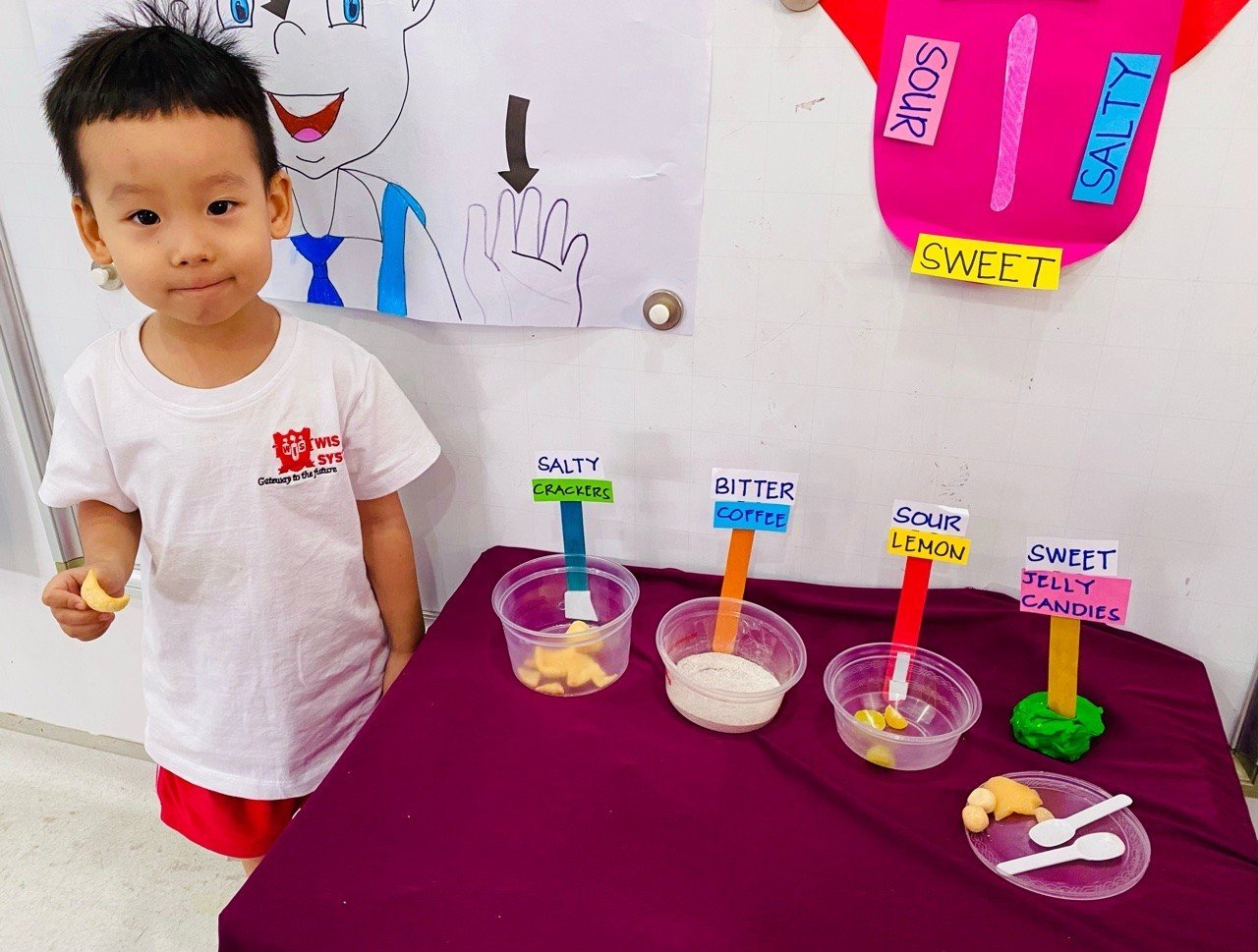All animals, including humans, need to eat and absorb nutrients from food to survive. We cannot eat everything. Wood and mud can be eaten, but they are not considered food because they cannot provide nutrients to our bodies. How do we know what we should and shouldn’t eat? The answer is taste. Each of these basic tastes – sour, spicy, salty, sweet, bitter – sends messages about what we put in our mouths so that we can decide whether they should be eaten.
The tongue’s surface is covered in tiny bumps with hundreds of taste buds, helping us recognize different tastes.
In today’s lesson, WIS children and their teacher would learn about four basic tastes that our tongues can recognize. These four tastes are sweet, salty, sour, and bitter.
- First, sweet taste is one of the most pleasing to most people. It is a desirable taste because sugar is a core source of energy for the body. Some examples of sweet foods are sugar cane, grapes, maple syrup, honey, jam, and sweet potatoes.
- Second, salt tastes salty and is crucial for a healthy body. Some examples of salty foods are table salt, crackers, pretzels, chips, processed meats, fries, and bacon.
- Next, it’s the sourness that usually comes from such foods as yogurt, lemons, etc.
- Last but not least, it is bitterness. Some bitter foods include coffee, bitter melon, etc.
Let WIS share how the children have fun learning via the pictures below.


 Vi
Vi









